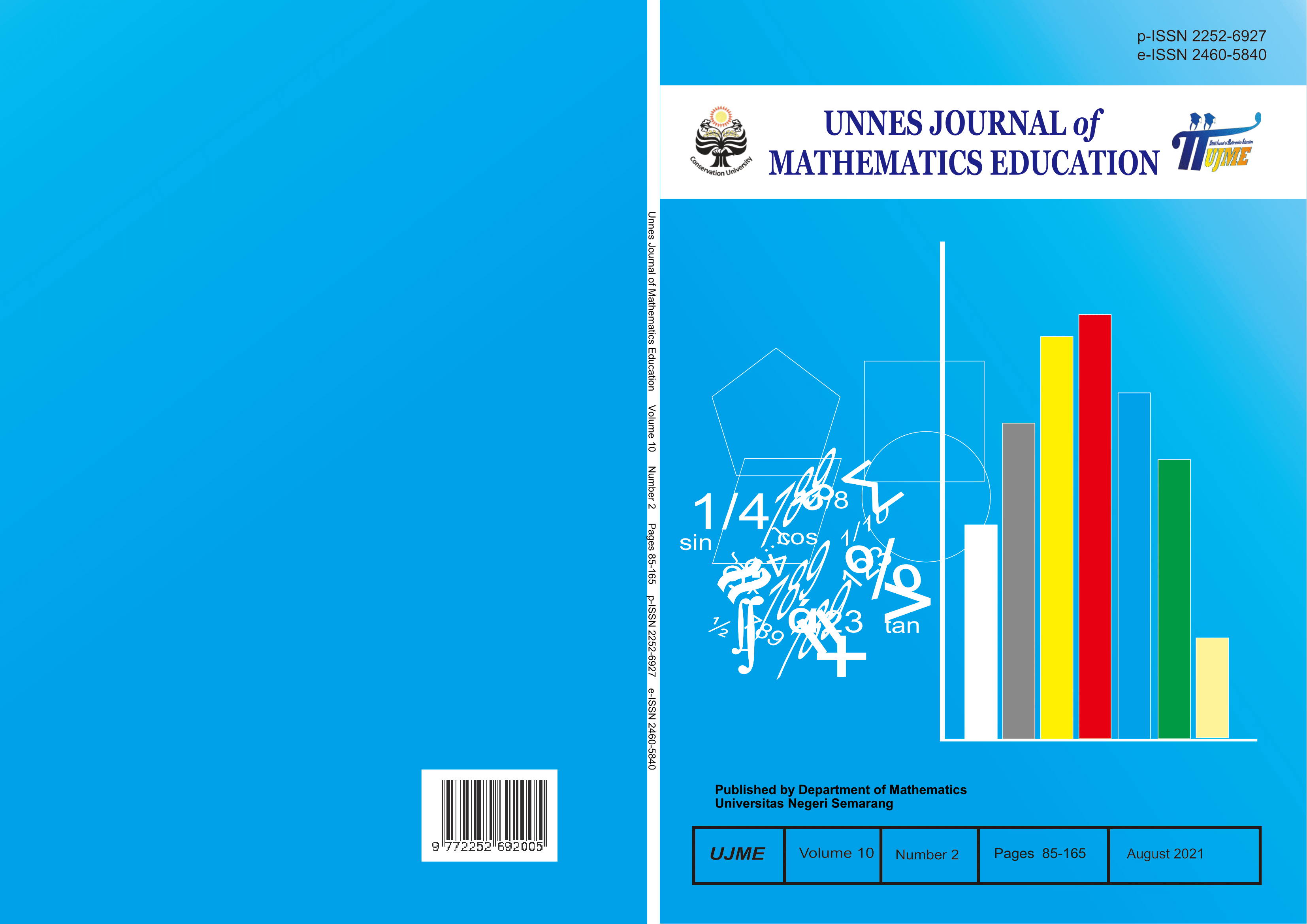Development process of mathematical representation ability and cultural love on RME learning using Wayang Kulit
##plugins.themes.academic_pro.article.main##
Abstract
The development of science and technology in the current era of globalization can have a positive and negative impact on human life. Mathematical ability and cultural love need to be possessed by students. The methodology applied the qualitative method and collecting data using a written test and interview. This study used media wayang kulit with RME learning model applied to grade VII students SMP. The ability of mathematical representation in schools is less developed by subject teachers. Conventional learning results in students only being able to have the mathematical representation capabilities provided by the teacher. The process of developing a student's mathematical representation consists of the initial activity with sample observations and finding the concept of matter. Then students look at various examples and discover the concept of matter. When faced with problems, students can go through the stages of identifying problems, developing plans for the use of representation, and the use of representations to solve problems or communicate ideas they have. The cultural love that the students have during the learning process is described as finding the material concept. But when faced with a choice between the use of traditional media and technology, students prefer to use the media technology.
##plugins.themes.academic_pro.article.details##
References
Moleong, J.L. 2010. Metode Penelitian Kualitatif Edisi Revisi. Bandung: PT Remaja Rosdakarya.
National Council of Teacher of Mathematics. 2000. Principles and Standards for School Mathematics. The National Coucil of Teacher of Mathematics, Inc. 1906 Association Drive, Reston, VA 201919988. ISBN 0-87353-480-8.
Panjaitan, A.P., Dermawan,A., Maharani, Purba, I.R., Rachmad, Y., & Simanjuntak, R. 2014. Korelasi Kebudayaan & Pendidikan. Jakarta: PT Rineka Cipta.
Sugiyono. 2009. Metode Penelitian Kuantitatif Kualitatif dan R&B. Bandung: Alfabeta.
Rifa’i, A., & Anni, C.T. 2012. Psikologi Pendidikan. Semarang: UNNES Press.
Rofiqoh, Z. 2015. Analisis Kemampuan Pemecahan Masalah Matematika Siswa Kelas X Dalam Pembelajaran Discovery Learning Berdasarkan Gaya Belajar Siswa. Skripsi. Semarang: UNNES.
Yudhanegara, M.R., & Lestari, K.E. 2014. Meningkatkan Kemampuan Representasi Beragam Matematis Siswa Melalui Pembelajaran Berbasis Masalah Terbuka Journal of Mathematical. 1(4): 97-106.
Zhe, L. 2012. Survey of Primary Students Mathematical Representation Satus and Study on the Teachig Model of Mathematical Representation. International Jurnal of Mathematical. 5(1): 63-76.
Zulkardi. 2010. Design Mathematics Lesson Based on The Realistic Approach. International Jurnal of Mathematical. 1: 9-14.
